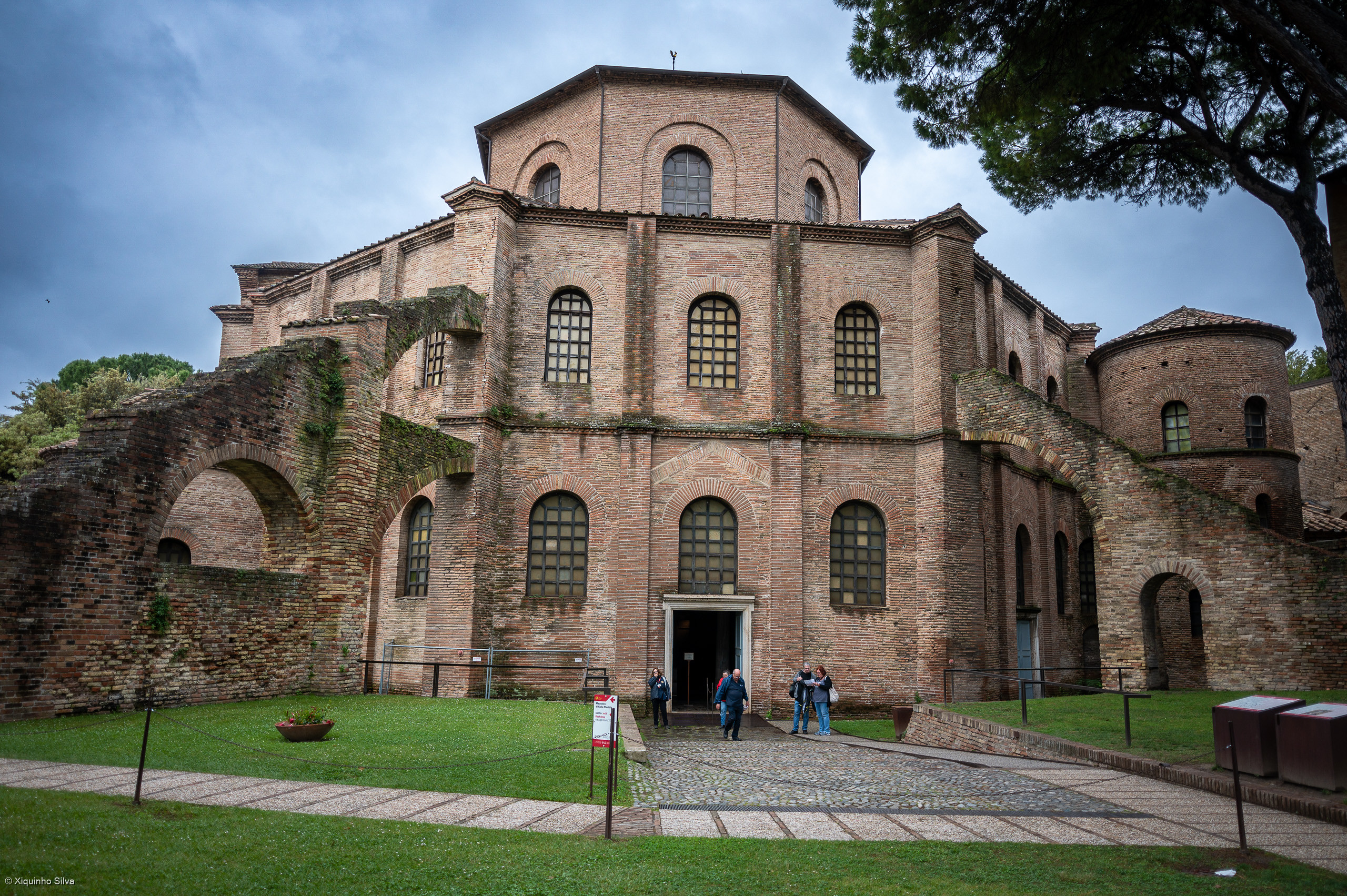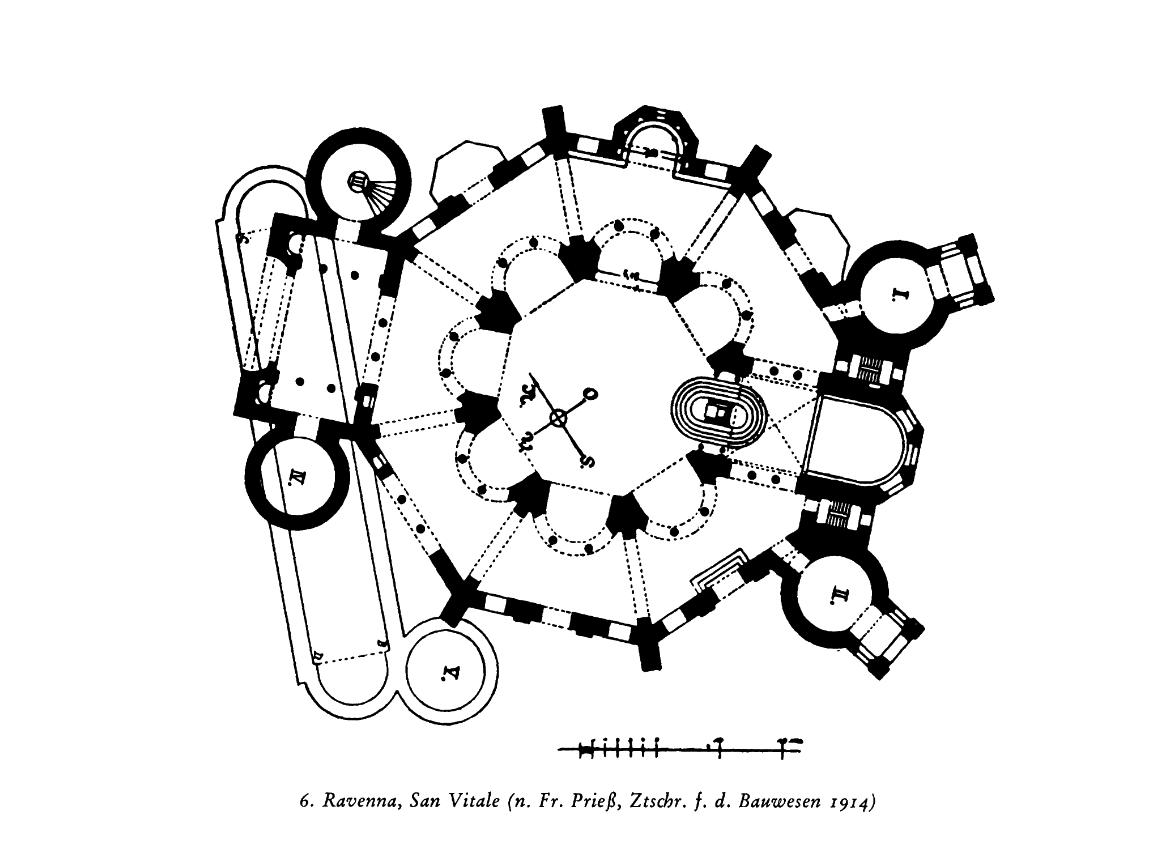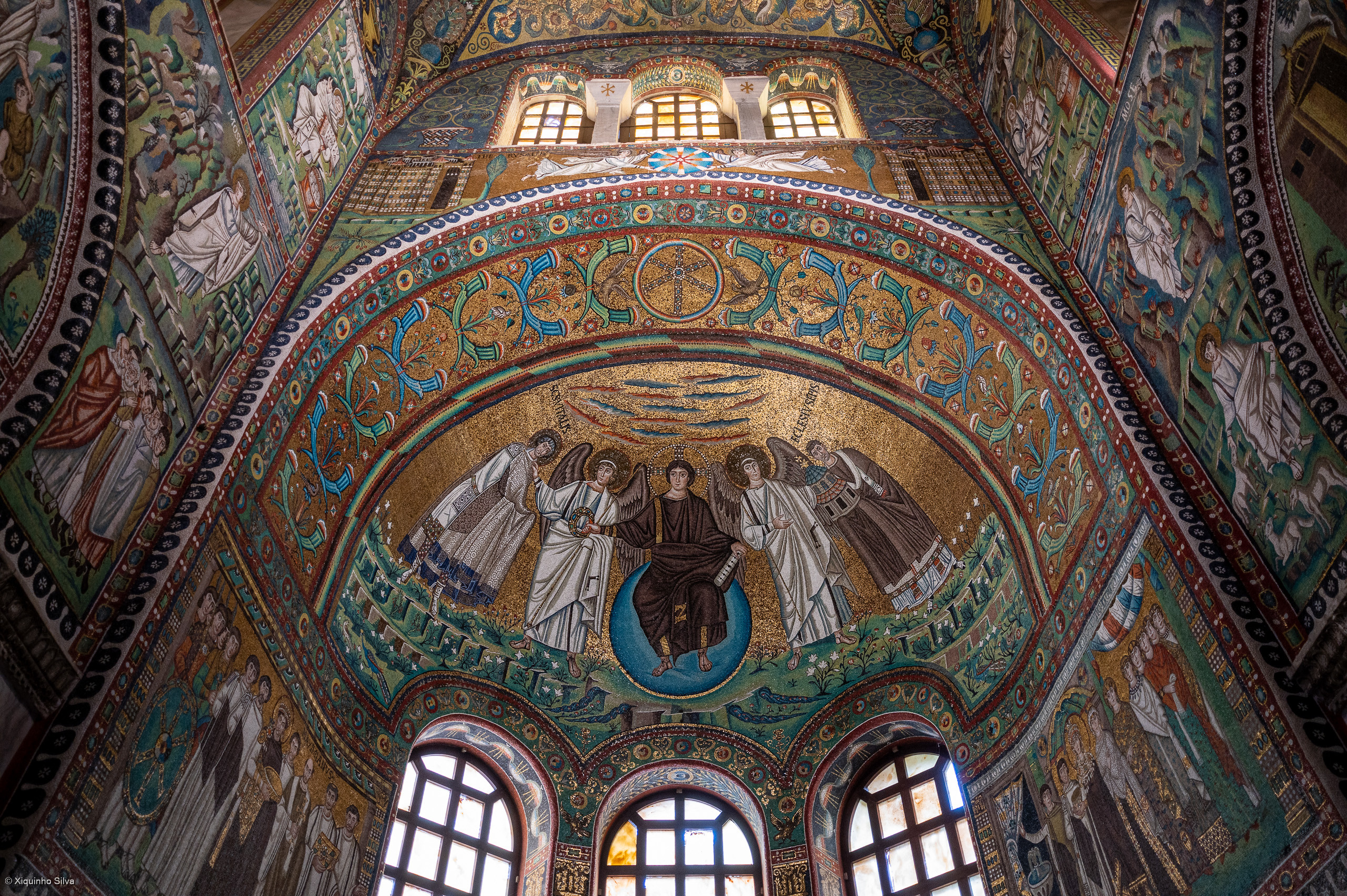The Church of San Vitale, located in Ravenna, Italy, is a 6th-century Byzantine monument regarded as one of the most significant structures of the Late Antique period. Its construction began in 526–527 and the church was consecrated in 547. San Vitale is considered a center that reflected the political and religious authority of the Eastern Roman Empire in the West. With its octagonal plan, central dome, and mosaic decoration, it represents one of the finest examples of early Byzantine art.
The building was commissioned by Ecclesius, the bishop of Ravenna at the time, and financed by the banker Julianus Argentarius. The mosaic program and decorative scheme were completed during the episcopate of Bishop Maximian. The church stands as a symbolic space of political transition, marking the end of Ostrogothic rule and the beginning of Byzantine administration in Italy.

Church of San Vitale (flickr)
History
Construction of the Church of San Vitale began in 526 or 527, during the reign of the Ostrogothic King Theoderic. Ecclesius, who served as Bishop of Ravenna between 522 and 533, is recognized as the church’s founder and laid its foundation. It is believed that Ecclesius was inspired by the architectural design of the Church of St. Polyeuktos and the Church of Saints Sergius and Bacchus (the Little Hagia Sophia) in Constantinople, which he visited in 526 during a diplomatic mission to the Byzantine capital with Pope John I. The construction was financed by Julianus Argentarius, a banker of Eastern origin.
Work on the building continued under Bishop Victor (537–544) and was completed and consecrated by Bishop Maximian in 547. During this period, the mosaic panels depicting Emperor Justinian and Empress Theodora were added as part of the church’s interior decoration. Following the establishment of Byzantine rule in Ravenna in 540, San Vitale became a symbol underscoring the religious and political legitimacy of the new administration. Over the centuries, the church underwent several restorations (notably in the 16th century, in 1900, 1904, and during the 1930s), yet its original mosaic program and architectural design have been largely preserved.
Architectural Features
The Church of San Vitale is characterized by its octagonal plan and central dome. It is considered one of the earliest and best-preserved examples of centrally planned Byzantine architecture in the West. The interior consists of a two-story arrangement with an ambulatory (circulation corridor) and an upper gallery surrounding the central space. This core area is encircled by eight piers connected by arches that define the octagonal structure. The dome, positioned at the center, is supported by pendentives that transition gracefully onto the eight-sided plan.

San Vitale’s Octagonal Plan【1】
Externally, the Church of San Vitale presents a simple appearance with its plain brickwork, while the interior is richly adorned with mosaics. The apse mosaics include biblical scenes as well as the two famous processional panels depicting Emperor Justinian and Empress Theodora. These mosaics form a symbolic program that unites imperial authority with divine order on the same visual plane. The marble revetments, the finely carved capitals, and the colorful stone mosaics endow the church with a splendor characteristic of Byzantine court architecture.
Interior and Mosaic Program
The interior of San Vitale features an extensive mosaic program designed in harmony with the architectural composition. The apse decoration presents an iconographic scheme imbued with both theological and political meaning. At the top, a youthful figure of Christ is depicted seated upon a celestial globe, holding the Book of Life, with a cruciform halo around his head. Christ is flanked by two archangels; he extends a martyr’s crown to Saint Vitalis, who kneels before him, while on the opposite side stands Bishop Ecclesius, the church’s founder. Ecclesius is shown offering a model of the church to Christ, symbolically dedicating the building to its divine patron.

Mosaics (flickr)
The mosaic panels on the side walls of the apse depict Emperor Justinian and Empress Theodora. Justinian is portrayed in a ceremonial procession advancing toward the altar, holding a liturgical vessel as an offering — emphasizing his role as a pious ruler and benefactor of the church. In a parallel composition, the Theodora panel shows the empress carrying a jeweled chalice, also moving toward the altar, accompanied by her attendants.
On the lower walls, scenes from the Old Testament are represented. Among these are the Hospitality of Abraham, in which Abraham welcomes three angels, and the Sacrifice of Isaac, where Abraham prepares to offer his son, as described in the Hebrew Scriptures.【2】 The use of a gold background in these mosaics eliminates any sense of spatial depth, placing the figures within a timeless, sacred realm that transcends earthly reality.


